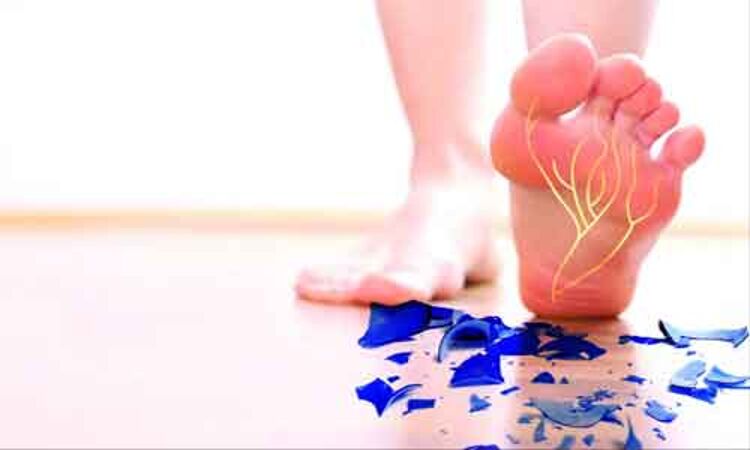- Home
- Medical news & Guidelines
- Anesthesiology
- Cardiology and CTVS
- Critical Care
- Dentistry
- Dermatology
- Diabetes and Endocrinology
- ENT
- Gastroenterology
- Medicine
- Nephrology
- Neurology
- Obstretics-Gynaecology
- Oncology
- Ophthalmology
- Orthopaedics
- Pediatrics-Neonatology
- Psychiatry
- Pulmonology
- Radiology
- Surgery
- Urology
- Laboratory Medicine
- Diet
- Nursing
- Paramedical
- Physiotherapy
- Health news
- Fact Check
- Bone Health Fact Check
- Brain Health Fact Check
- Cancer Related Fact Check
- Child Care Fact Check
- Dental and oral health fact check
- Diabetes and metabolic health fact check
- Diet and Nutrition Fact Check
- Eye and ENT Care Fact Check
- Fitness fact check
- Gut health fact check
- Heart health fact check
- Kidney health fact check
- Medical education fact check
- Men's health fact check
- Respiratory fact check
- Skin and hair care fact check
- Vaccine and Immunization fact check
- Women's health fact check
- AYUSH
- State News
- Andaman and Nicobar Islands
- Andhra Pradesh
- Arunachal Pradesh
- Assam
- Bihar
- Chandigarh
- Chattisgarh
- Dadra and Nagar Haveli
- Daman and Diu
- Delhi
- Goa
- Gujarat
- Haryana
- Himachal Pradesh
- Jammu & Kashmir
- Jharkhand
- Karnataka
- Kerala
- Ladakh
- Lakshadweep
- Madhya Pradesh
- Maharashtra
- Manipur
- Meghalaya
- Mizoram
- Nagaland
- Odisha
- Puducherry
- Punjab
- Rajasthan
- Sikkim
- Tamil Nadu
- Telangana
- Tripura
- Uttar Pradesh
- Uttrakhand
- West Bengal
- Medical Education
- Industry
Sympathetic skin response may detect and predict prognosis of diabetic peripheral neuropathy in children

T1DM, the most common subtype of pediatric diabetes mellitus, is increasing at around 3%. Genetic and environmental factors (eating habits, physical inactivity and pollution) are speculated to be involved in the pathogenesis of T1DM. These factors make the management of diabetes complicated. To establish the diagnosis and prognosis of many diseases, sympathetic skin response (SSR) has been used to evaluate the autonomic unmyelinated nerve fibre function. SSR could provide the accurate early diagnosis and follow-up of pediatric diabetic peripheral neuropathy, says Mei Jin in a recent study published in BMC Pediatrics.
The morbidity of T1DM in children is increasing, and diabetic peripheral neuropathy (DPN) is the main microvascular complication of T1DM. Considering this, researchers explored SSR characteristics in children with T1DM and analyzed the value of early diagnosis and follow-up in T1DM complicated with DPN.
The study enrolled 85 participants with T1DM and 30 healthy controls (HCs) in the Children’s Hospital of Hebei Province ( 2017 to 2020). Key findings of the study are:
- SSR latency of the T1DM group showed a statistical difference compared to HCs.
- The SSR test was more sensitive in diagnosing T1DM with DPN early than the nerve conduction study (NCS) test.
- The abnormal rates of SSR and NCS during the long duration of the disease were higher than those in the short duration.
- Among 65 participants with diabetic neuropathy, the onset latencies of SSR were shortened, and the NCS were improved after treatment.
SSR and NCS could play a prominent role in screening for the development of DPN. SSR and NCS could evaluate and assess the small unmyelinated sympathetic fibres and large myelinated peripheral nerves, respectively and are well-tolerated by children.
They said SSR could provide an accurate early diagnosis and follow-up of neuropathy as these tests are superior to NCS tests in diagnosing neuropathy early.
Reference:
Jin, M., Liu, J., Liu, K. et al. Evaluation of sympathetic skin response for early diagnosis and follow-up of diabetic peripheral neuropathy in children. BMC Pediatr 23, 483 (2023). https://doi.org/10.1186/s12887-023-04323-4
BDS, MDS in Periodontics and Implantology
Dr. Aditi Yadav is a BDS, MDS in Periodontics and Implantology. She has a clinical experience of 5 years as a laser dental surgeon. She also has a Diploma in clinical research and pharmacovigilance and is a Certified data scientist. She is currently working as a content developer in e-health services. Dr. Yadav has a keen interest in Medical Journalism and is actively involved in Medical Research writing.
Dr Kamal Kant Kohli-MBBS, DTCD- a chest specialist with more than 30 years of practice and a flair for writing clinical articles, Dr Kamal Kant Kohli joined Medical Dialogues as a Chief Editor of Medical News. Besides writing articles, as an editor, he proofreads and verifies all the medical content published on Medical Dialogues including those coming from journals, studies,medical conferences,guidelines etc. Email: drkohli@medicaldialogues.in. Contact no. 011-43720751


